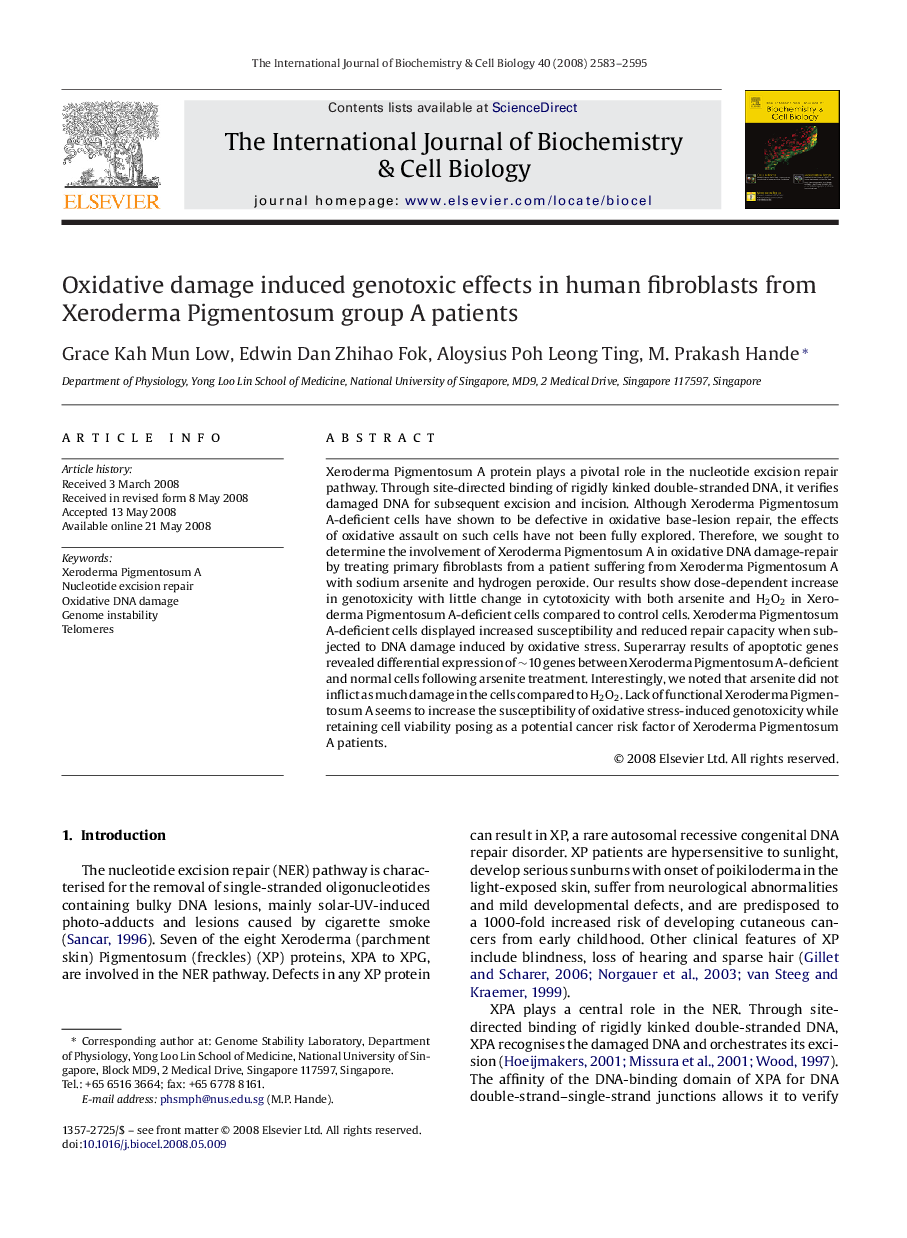| Article ID | Journal | Published Year | Pages | File Type |
|---|---|---|---|---|
| 1984781 | The International Journal of Biochemistry & Cell Biology | 2008 | 13 Pages |
Xeroderma Pigmentosum A protein plays a pivotal role in the nucleotide excision repair pathway. Through site-directed binding of rigidly kinked double-stranded DNA, it verifies damaged DNA for subsequent excision and incision. Although Xeroderma Pigmentosum A-deficient cells have shown to be defective in oxidative base-lesion repair, the effects of oxidative assault on such cells have not been fully explored. Therefore, we sought to determine the involvement of Xeroderma Pigmentosum A in oxidative DNA damage-repair by treating primary fibroblasts from a patient suffering from Xeroderma Pigmentosum A with sodium arsenite and hydrogen peroxide. Our results show dose-dependent increase in genotoxicity with little change in cytotoxicity with both arsenite and H2O2 in Xeroderma Pigmentosum A-deficient cells compared to control cells. Xeroderma Pigmentosum A-deficient cells displayed increased susceptibility and reduced repair capacity when subjected to DNA damage induced by oxidative stress. Superarray results of apoptotic genes revealed differential expression of ∼10 genes between Xeroderma Pigmentosum A-deficient and normal cells following arsenite treatment. Interestingly, we noted that arsenite did not inflict as much damage in the cells compared to H2O2. Lack of functional Xeroderma Pigmentosum A seems to increase the susceptibility of oxidative stress-induced genotoxicity while retaining cell viability posing as a potential cancer risk factor of Xeroderma Pigmentosum A patients.
